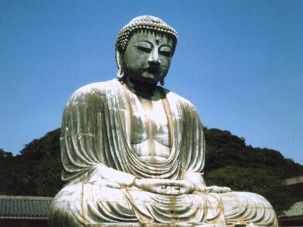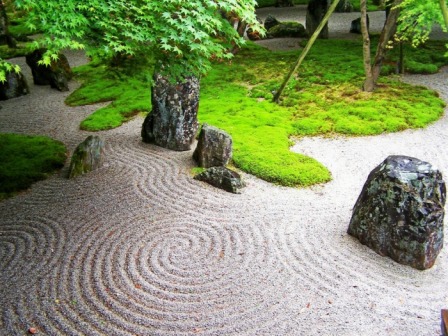Explain the forms of Buddhism practiced in Japan and their effect on the country's culture.

The Japanese Buddah
Buddhism is a religion that first spread from India and influenced much of Eurasia and Africa. Buddhism spread to China very quickly and from China to Korea, Khmer, Dai Viet, and Japan. Buddhism was easily able to slip in and spread rapidly in Japan due to Prince Shotoku's support of it. The ancient Shinto religion of Japan worked with Buddhism and was intertwined with it to create a happiness for using Buddhism. The belief of peace and happiness becoming gained after life by leading a life of virtue and wisdom came from the mix of Buddhism and Shinto. There were four main, but different, forms of Japanese Buddhism. They were: Tendai, Shingon, Amida, and Zen. Tendai was mainly about the intensive study of texts and learning. Shingon had many complex rituals that followers were to perform, attracting some followers. Amida's thoughts were mostly of a pure land after death, in which people could gain salvation. Zen involved self-discipline, simplicity, much nature, and an inner calmness. Zen eventually became the strongest and the most favored Buddhism interpretation in Japan around the 1100's. The ideas of an inner peace instead of reaching salvation was much more important to the Japanese at that time, so Zen overpowered the other Buddhism interpretations. Many different people tried Zen Buddhism and some of those people were the samurai. The samurai believed Zen would help them on the battlefield, so it was greatly practiced by them. Not only the samurai, but also the artists of Japan were immensly influenced by the ideas of Zen. Their artwork began to emphasize many standards of Zen like simplicity and calm nature. Zen also became very popular in other areas for it had spread wide and far very fast. Prince Shotoku's love for the Chinese ideas and Buddhism began to create a connection between China and Japan. Prince Shotoku began to send Japanese to China to study their ways and also allowed many Chinese to enter Japan. Buddhism continued to impress Prince Shotoku and he continued to nurture this relationship with China. He also took many Buddhist ideas and mixed them with their own ideas to create a more acceptable religion that the Japanese would enjoy following. The Japanese remained fascinated by the Chinese ways, but they also continued to practice their own religions like Shinto to not forget their older history and culture.

